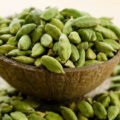Beetroot Overview
Many people regard beetroot as nothing more than an attractive garnish for salads, or a healthy ingredient to add to smoothies and soups, but this underrated vegetable has many more health benefits than most people realize. Not only does it have anti-inflammatory properties and high levels of antioxidants, but it can also help reduce the risk of cancer and heart disease, improve cardiovascular health, boost digestion, and even aid weight loss! Here are some other surprising facts about beetroot that you might not know!
What are beets?
Beetroot is a vegetable commonly found in American grocery stores during winter. Also known as beet, it has a long history of cultivation and use, dating back thousands of years. The reddish-purple colour of beets comes from its pigment, betalain. Betalains are antioxidants and help protect cells from free radical damage that can lead to cancer and other diseases.
Beets are also high in folate, which helps to regulate homocysteine levels in your blood; high homocysteine levels can increase your risk for cardiovascular disease. Additionally, beets contain manganese and potassium, which play important roles in muscle contraction and kidney function respectively.

Varieties of Beetroot
Most of us are familiar with red beetroots, but other varieties have different colors and flavors, such as golden beets. They can all be eaten raw in salads or cooked in a variety of recipes from borscht to casseroles. Some even have medicinal uses and are used in traditional medicines around the world.
The most common varieties include Beluga (white) Varieties of Beetroot: Most of us are familiar with red beetroots, but other varieties have different colors and flavors, such as golden beets. They can all be eaten raw in salads or cooked in a variety of recipes from borscht to casseroles. Some even have medicinal uses and are used in traditional medicines around the world.
Nutritional Value
In addition to containing a wide range of vitamins and minerals, beetroots are very high in iron and folic acid. They also contain antioxidant compounds called betalains, which have anti-inflammatory properties. Beetroots can help lower blood pressure, improve circulation and boost overall cardiovascular health. They may also lower the risk for certain cancers. Because they don’t contain any sodium or cholesterol, they make an excellent diet food that promotes weight loss or weight maintenance. (Source: Mayo Clinic)
• Iron (8% DV): Helps red blood cells transport oxygen throughout your body; helps maintain healthy skin, hair, and nails; provides energy; maintains body temperature; is important for mental development in children; supports endurance exercise performance. Women 12–51 years old need 18 mg/day; men need 8 mg/day.

Health Benifits
Beetroot provides a rich source of nutrients and antioxidants. It is a good source of folic acid, potassium, fibre, magnesium, and vitamins C and B6. Beet juice has been proven to help prevent osteoporosis as it is rich in calcium.
A cup of beetroot provides 40% of recommended daily allowance (RDA) for vitamin C which is important for immune function. Beetroots also contain phytochemicals called betalains that are powerful antioxidants with anti-inflammatory properties. The combination of betalains and antioxidants in beetroots may contribute to lowering cholesterol and preventing heart disease, atherosclerosis, or even cancer.
Growing Process
There are a few ways to grow beetroots at home. The most common is by sowing seeds directly into your garden. The seeds can be planted in spring or autumn (fall). Beets have very long taproots and are among one of only two vegetables that are harvested as biennials, or true vegetables. These vegetables take a year to grow, bloom and go to seed before being harvested in their second year of growth. Alternatively, you can buy pre-grown beets from some nurseries and specialty shops for an early harvest without having to wait for them to mature over two years.

Beetroot Recipes
There are plenty of ways to prepare beetroot, but one popular way is by cutting it into fine slices and roasting it in a hot oven for around 30 minutes. It will lose its raw red color and turn golden brown. This may not sound that appetizing, but trust us; once you try it, you’ll be hooked! You can use roasted beetroots in a range of different recipes from salads to dips. Try blending them with tahini or hummus for a sweet flavor kick or using them as a burger topping for an extra tasty meal. You could even add some grated cheese to make roasted beetroot pizza!
Storage and Preparation
The best way to store beetroots is to buy them with their leaves on and leave them in a cool, dark place (such as a box in your pantry). This will keep them fresh for several weeks longer than if you were to buy them with their leaves removed. You can also wrap each beetroot in foil pop it into an airtight container or plastic bag and place it in your fridge’s vegetable drawer. You should eat them within 2 days of buying or purchasing; not only do they lose flavor after time, but they also soften and begin to ferment. Beets are very easy to prepare; you can peel off the skin using a good vegetable peeler, boil, roast, steam, or microwave.

